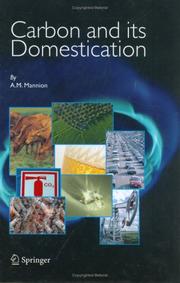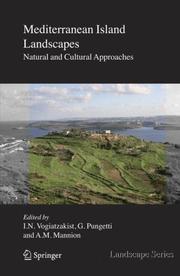| Listing 1 - 2 of 2 |
Sort by
|

ISBN: 1280612576 9786610612574 1402039581 1402039565 1402039573 Year: 2006 Publisher: Dordrecht : Springer Netherlands : Imprint: Springer,
Abstract | Keywords | Export | Availability | Bookmark
 Loading...
Loading...Choose an application
- Reference Manager
- EndNote
- RefWorks (Direct export to RefWorks)
Carbon is chemically versatile and is thus the body and soul of biological, geological, ecological and economic systems. Its appropriation by humans through diversion of its biogeochemical cycle has been a mainstay of development. This domestication is characterized by a number of thresholds: control of fire, development of agriculture, expansion of Europe, fossil-fuel use and biotechnology. All have exacted an environmental toll, not least being climatic change and biodiversity loss. Carbon management now and in the future is a ‘hot’ political issue. There is no existing book which focuses on the pivotal role of carbon in the environment and society and the ways in which carbon has been domesticated in time and space to generate wealth and political advantage. Students of environmental science, geography, biology and general science will find this work invaluable as a cross-disciplinary text.
Carbon. --- Carbon --- Environmental aspects. --- Political aspects. --- Group 14 elements --- Light elements --- Environmental sciences. --- Chemistry, Organic. --- Environmental management. --- Geography. --- Ecology. --- Environment, general. --- Organic Chemistry. --- Environmental Management. --- Earth Sciences, general. --- Geography, general. --- Cosmography --- Earth sciences --- World history --- Environmental stewardship --- Stewardship, Environmental --- Environmental sciences --- Management --- Organic chemistry --- Chemistry --- Balance of nature --- Biology --- Bionomics --- Ecological processes --- Ecological science --- Ecological sciences --- Environment --- Environmental biology --- Oecology --- Population biology --- Environmental science --- Science --- Ecology --- Environment. --- Organic chemistry. --- Earth sciences. --- Ecology . --- Geosciences --- Physical sciences

ISBN: 1281220159 9786611220150 140205064X 1402050631 9048172713 Year: 2008 Publisher: Dordrecht : Springer Netherlands : Imprint: Springer,
Abstract | Keywords | Export | Availability | Bookmark
 Loading...
Loading...Choose an application
- Reference Manager
- EndNote
- RefWorks (Direct export to RefWorks)
Mediterranean islands exhibit many similarities in their biotic ecological, physical and environmental characteristics. There are also many differences in terms of their human colonization and current anthropogenic pressures. This book addresses in three sections these characteristics and examines the major environmental changes that the islands experienced during the Quaternary period. The first section provides details on natural and cultural factors which have shaped island landscapes. It describes the environmental and cultural changes of the Holocene and their effects on biota, as well as on the current human pressures that are now threats to the sustainability of the island communities. The second section focuses on the landscapes of the largest islands namely Sicily, Sardinia, Corsica, Cyprus, Crete, Malta and the Balearics. Each island chapter includes a special topic reflecting a particular characteristic of the island. Part three presents strategies for action towards sustainability in Mediterranean islands and concludes with a comparison between the largest islands. Despite several published books on Mediterranean ecosystems/landscapes there is no existing book dealing with Mediterranean islands in a collective manner. Students, researchers and university lecturers in environmental science, geography, biology and ecology will find this work invaluable as a cross-disciplinary text while planners and politicians will welcome the succinct summaries as background material to planning decisions.
Natural history --- Islands of the Mediterranean. --- Mediterranean Islands --- History, Natural --- Natural science --- Physiophilosophy --- Biology --- Science --- Landscape ecology. --- Geology. --- Ecology. --- Geography. --- Environmental sciences. --- Cultural heritage. --- Landscape Ecology. --- Historical Geology. --- Geography, general. --- Environment, general. --- Cultural Heritage. --- Cultural heritage --- Cultural patrimony --- Cultural resources --- Heritage property --- National heritage --- National patrimony --- National treasure --- Patrimony, Cultural --- Treasure, National --- Property --- World Heritage areas --- Environmental science --- Cosmography --- Earth sciences --- World history --- Balance of nature --- Bionomics --- Ecological processes --- Ecological science --- Ecological sciences --- Environment --- Environmental biology --- Oecology --- Environmental sciences --- Population biology --- Geognosy --- Geoscience --- Ecology --- Historical geology. --- Ecology . --- Environment. --- Geology
| Listing 1 - 2 of 2 |
Sort by
|

 Search
Search Feedback
Feedback About
About Help
Help News
News